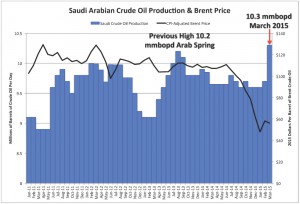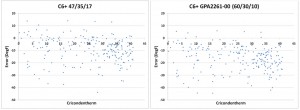June 2009 Vol. 236 No. 6
Features
Rotor Instability Problems In An Integrally Geared Compressor
MSI was asked by an end-user to help troubleshoot a newly commissioned critical compressor train that had begun to undergo unexplained vibration trips. These sudden vibration trips threatened to result in a substantial revenue loss for the end user.
The combined service, six-stage (three plus three) integrally geared compressor was installed in an industrial gas facility supplying a major petrochemical plant. The compressor was electric motor driven with three stages for high-pressure nitrogen compression and three stages for high-pressure dry air compression. The compressor was commissioned with bearing pad temperatures that exceeded 200 degrees F during continuous operation. Subsequent bearing inspections showed excessive oil coking and wear.
The OEM attempted to modify the bearings to reduce the pad temperatures, but this was unsuccessful due to unacceptably high vibration amplitudes. Following the vibration trips MSI traveled to the facility on short notice and began testing. The data collection involved a series of process and bearing oil tests to recreate the trip phenomena. MSI was able to conclusively identify the problem as a rotordynamic instability that was caused by a strong subsynchronous excitation of a cantilevered rotor natural frequency located at 47% of running speed (Figure 1).

Rotordynamic analysis suggested that the subsynchronous excitation was due to labyrinth seal cross coupling effects. Based on the recommendation of MSI, the manufacturer installed swirl breaks to decrease the subsynchronous vibration excitation. This eliminated the rotordynamic instability, and allowed the bearings to be modified in order to reduce bearing pad temperatures. Following the installation of swirl breaks, the plant’s critical compressor train has not experienced a vibration related trip.
The use of state-of-the-art rotordynamic and FEA codes along with significant compressor design audit experience can help to identify potential problems before they can interfere with a plant’s operations. For example, the application of empirical stability criteria such as the Fulton/ Sood Stability Map early on would have identified the instability which was seen in this compressor (Figure 2).


Authors
William D. Marscher is president and technical director of Mechanic Solutions, Inc. (MSI). During his career of nearly 40 years, he has been involved in the design, development and troubleshooting of mechanical components and systems, including pumps, fans, compressors and turbines. He chairs the board of the Machinery Failure Prevention Technology (MFPT) Society and is the author of the chapter concerning turbomachinery structural design and analysis in the Third Edition of Sawyer’s Gas Turbine Handbook.
Eric J. Olson is a principal engineer at MSI. With more than 25 years of experience, he functions in both technical and business development capacities at the firm. His background includes gas and steam turbines, compressors, air dynamometers, and high-performance engineered pumps, and he is a multi-year short-course speaker at the Texas A&M International Pump Symposium. His areas of focus include turbomachinery troubleshooting, turbomachinery design and analysis, and alternative energy.





Comments